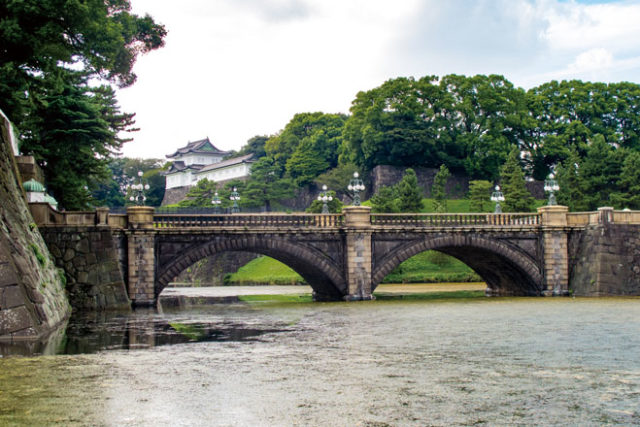By Yukiko Tanaka
For The North American Post
To enjoy Tokyo it is best to walk around and explore, and by doing so, to immerse yourself in what you see and feel what you can. This, it seems to me, is the essential task of a good traveler. While you walk, even with a map in your hand, you would inevitably have to stop sometime and ask for directions. Exchanging even a few words with people who live in the city you visit adds a human touch to your walk and your travel. Although you need to know some rudimental Japanese expressions to do this, you will be rewarded; most Japanese are willing, even eager, to help.
Sightseeing and traveling in foreign countries are in my mind for two different things, and the latter is never an easy endeavor. To be on tour–that is, to be a passive traveler–you will not only miss out on direct contact with the native people but it will also make the seeing, the feeling and the understanding of the place you visit less intense, less meaningful. Even if it means some work beforehand and even though you may encounter some difficulties in unfamiliar places, it is best to be on your own traveling in foreign countries, it is better than the easy way with someone doing the work for you. The reward of choosing the harder way to travel is that you can experience the rare moments in your life more intensely, so that what you saw and learned will stay with you. Particularly when you are young and impressionable, you should travel alone to places new to you. I want this guide to Tokyo to be helpful for those seeking adventures of the soul and mind.
During early 1980s, when the Japanese economy was booming, there was a perception among foreigners that traveling in Japan was an expensive venture. It was a correct perception because yen was very expensive then, but the perception has persisted long after the exchange rate changed. Traveling Japan is not particularly expensive, if you know how to travel. I want this guide to Tokyo to help those who cannot afford expensive “tours,” so I will try to supply where I can with information that will help to contain the cost (though not to the extent of “shoe-string” level).
When you arrive at Narita Airport (in Chiba Prefecture), you have a choice of transportation going into the city center. Considering the starting point of your exploration of Tokyo, Nihonbashi, you ought to pick the airport bus right outside of the terminal. Among many buses that run to many different areas of Tokyo, what you need is the one going to “the City Terminal” (or “Hakozaki”; 2,900 yen one way). If you head to other areas of Tokyo, JR (Japan Rail) Sobu Line or Keisei is quicker and less expensive.
If you arrive at Narita late at night, take the bus as there is a hotel adjacent to the City Terminal, but be warned that it is pricy. In accommodation of the first night, I recommend you to walk for 15 minutes into the heart of the Nihonbashi neighborhood, where there are quite a few economy hotels (business hotel, Tokyo Stay, charges 8,400 yen for a single with a mini-kitchen and a washing machine).
Nihonbashi is not often highlighted for sightseeing in English (or Japanese for that matter) guide books, but during the Edo period it was the bustling city center with vibrant commercial activities; a bridge there (Nihon-bashi) was the point from which distances were measured on five major highways (of which Tokai-do, stretching to south west, is the most well-known). In those days, traveling, even for the post-man, was on foot. You, too, will walk to see Tokyo.
Tokyo is a large metropolis, and even limiting oneself to its center it takes time to explore. How much time it would take is entirely dependent on individuals and their legs. Even limiting to those wards mentioned above, you see only a fraction (though it is an essential one). What you realize, at the end of your exploration, is that Tokyo is a sum of “villages,” as it were; each section is with its unique colors and flavors, with its history and culture, as well as physical characteristics, all somewhat different from each other. I hope I can somehow convey that fact in my guide.
[Editor’s Note]
This series will be published every week. The writer can be reached atytanaka03@gmail.com.





